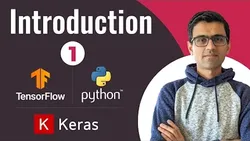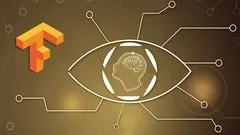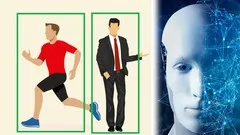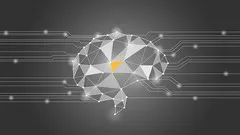
Tensorflow Object Detection in 5 Hours with Python Full Course with 3 Projects 
This course provides an introduction to Tensorflow Object Detection in 5 hours with Python. It covers installation and setup, collecting images and labelling, training the model, and creating 3 projects. Participants will learn how to clone the baseline code from GitHub, create a virtual environment, collect images using their webcam, and label images for training. By the end of the course, they will have a better understanding of Tensorflow Object Detection and be able to create their own projects. ▼
ADVERTISEMENT
Course Feature
![]() Cost:
Cost:
Free
![]() Provider:
Provider:
Youtube
![]() Certificate:
Certificate:
Paid Certification
![]() Language:
Language:
English
![]() Start Date:
Start Date:
On-Demand
Course Overview
❗The content presented here is sourced directly from Youtube platform. For comprehensive course details, including enrollment information, simply click on the 'Go to class' link on our website.
Updated in [February 21st, 2023]
This course provides an overview of Tensorflow Object Detection in 5 hours with Python. It covers installation and setup, collecting images and labelling, training Tensorflow Object Detection models, detecting objects from images and webcams, freezing TFOD and converting to TFJS and TFLite, performance tuning to improve precision and recall, training Object Detection models on Colab, and Object Detection projects with Python.
The course begins with installation and setup, including cloning the baseline code from GitHub, creating a virtual environment, and installing Tensorflow Object Detection for Python. It then moves on to collecting images and labelling, including collecting images using a webcam and labelling images for object detection using LabelImg.
The course then covers training Tensorflow Object Detection models, including Tensorflow Model Zoo, installing CUDA and cuDNN, using Tensorflow Model Zoo models, creating and updating a label map, creating TF Records, training Tensorflow Object Detection models for Python, and evaluating OD models precision and recall. It also covers detecting objects from images and webcams, freezing TFOD and converting to TFJS and TFLite, performance tuning to improve precision and recall, training Object Detection models on Colab, and Object Detection projects with Python.
The course culminates with three projects: detecting object defects with a microscope, web direction detection using Tensorflow JS, and sentiment detection on a Raspberry Pi using TFLite.
[Applications]
After completing this course, students should be able to apply the knowledge they have gained to create their own object detection models using Tensorflow. They should be able to use the model zoo to find pre-trained models, create and update label maps, create TF Records, and train and evaluate models. They should also be able to detect objects in images and in real time using a webcam, freeze TFOD and convert to TFJS and TFLite, and tune performance to improve precision and recall. Finally, they should be able to use the skills they have learned to complete object detection projects with Python, such as detecting object defects with a microscope, web direction detection using Tensorflow JS, and sentiment detection on a Raspberry Pi using TFLite.
[Career Paths]
1. Machine Learning Engineer: Machine learning engineers are responsible for developing and deploying machine learning models. They use tools such as TensorFlow, Keras, and Scikit-learn to build and optimize models. They also need to be familiar with data engineering and data science techniques to ensure that the models are accurate and reliable. The demand for machine learning engineers is increasing as more companies are looking to leverage the power of AI and machine learning.
2. Data Scientist: Data scientists use a variety of techniques to analyze data and uncover insights. They use tools such as Python, R, and SQL to manipulate and visualize data. They also need to be familiar with machine learning algorithms and techniques to build predictive models. Data scientists are in high demand as companies are looking to leverage the power of data to make better decisions.
3. Artificial Intelligence Engineer: Artificial intelligence engineers are responsible for developing and deploying AI solutions. They use tools such as TensorFlow, Keras, and Scikit-learn to build and optimize models. They also need to be familiar with data engineering and data science techniques to ensure that the models are accurate and reliable. The demand for AI engineers is increasing as more companies are looking to leverage the power of AI and machine learning.
4. Computer Vision Engineer: Computer vision engineers are responsible for developing and deploying computer vision solutions. They use tools such as OpenCV, TensorFlow, and Scikit-learn to build and optimize models. They also need to be familiar with data engineering and data science techniques to ensure that the models are accurate and reliable. The demand for computer vision engineers is increasing as more companies are looking to leverage the power of AI and machine learning for computer vision applications.
[Education Paths]
Recommended Degree Paths:
1. Bachelor of Science in Computer Science: This degree path provides students with a comprehensive understanding of computer science fundamentals, including programming, software engineering, and data structures. It also covers topics such as artificial intelligence, machine learning, and robotics. This degree is ideal for those interested in developing and deploying object detection models using TensorFlow.
2. Master of Science in Artificial Intelligence: This degree path provides students with a deep understanding of artificial intelligence and its applications. It covers topics such as natural language processing, computer vision, and machine learning. This degree is ideal for those interested in developing and deploying object detection models using TensorFlow.
3. Master of Science in Data Science: This degree path provides students with a comprehensive understanding of data science fundamentals, including data mining, machine learning, and data visualization. It also covers topics such as artificial intelligence, deep learning, and natural language processing. This degree is ideal for those interested in developing and deploying object detection models using TensorFlow.
Developing Trends:
1. Automation: Automation is becoming increasingly important in the development and deployment of object detection models. Automation tools such as TensorFlow and other machine learning frameworks are making it easier to develop and deploy object detection models.
2. Cloud Computing: Cloud computing is becoming increasingly important in the development and deployment of object detection models. Cloud computing platforms such as Amazon Web Services and Google Cloud Platform are making it easier to develop and deploy object detection models.
3. Edge Computing: Edge computing is becoming increasingly important in the development and deployment of object detection models. Edge computing platforms such as NVIDIA Jetson and Google Edge TPU are making it easier to develop and deploy object detection models.
Course Provider

Provider Youtube's Stats at AZClass
Discussion and Reviews
0.0 (Based on 0 reviews)
Explore Similar Online Courses

Colorado Real Estate Broker License Exam: Study Guide

DaVinci Resolve - COMPLETE Tutorial for Beginners!

Deep Learning With Tensorflow 20 Keras and Python

Tensorflow on Googles Cloud Platform for Data Engineers

Deep Learning and Reinforcement Learning with Tensorflow

Tensorflow Deep Learning - Data Science in Python

Neural Networks with Tensorflow

TensorFlow Hub: Deep Learning Computer Vision and NLP

LEARNING PATH: TensorFlow: Computer Vision with TensorFlow

Hands-On Transfer Learning with TensorFlow 20

Human Tracking & Counting using TensorFlow & Deep Learning


Start your review of Tensorflow Object Detection in 5 Hours with Python Full Course with 3 Projects